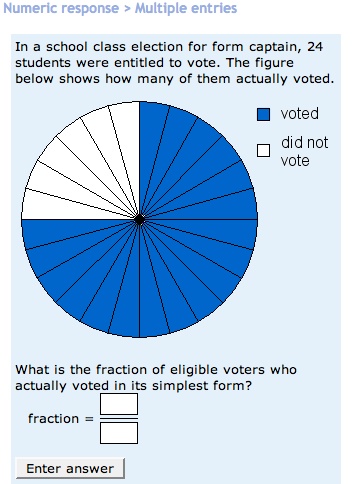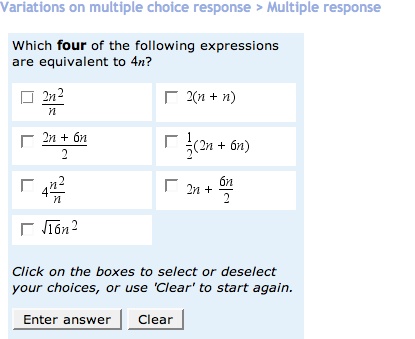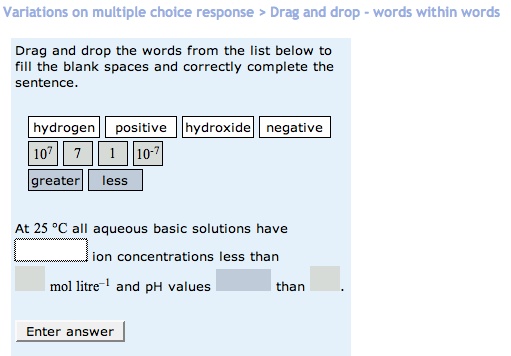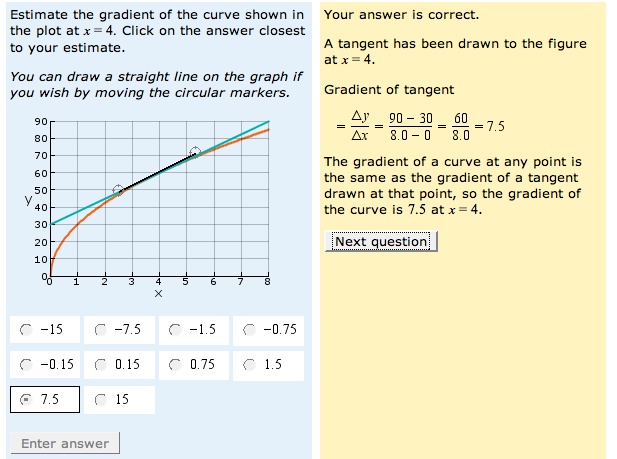August 14, 2007
OpenMark Computer-Assisted Assessment Tool
For some time now, the OU has been running a "computer-assisted assessment system" on some of our courses using an in-house system known as OpenMark. The project is actually made available as an open source project, which you can find at https://openmark.dev.java.net/.
OpenMark differs from traditional CAA systems in:
* The emphasis we place on feedback. All Open University students are distance learners and within the university we emphasise the importance of giving feedback on written assessments. The design of OpenMark assumes that feedback, perhaps at multiple levels, will be included.
* Allowing multiple attempts. OpenMark is an interactive system, and consequently we can ask students to act on feedback that we give 'there and then', while the problem is still in their mind. If their first answer is incorrect, they can have an immediate second, or third, attempt.
* The breadth of interactions supported. We aim to use the full capabilities of modern multimedia computers to create engaging assessments.
* The design for anywhere, anytime use. OpenMark assessments are designed to enable students to complete them in their own time in a manner that fits with normal life. They can be interrupted at any point and resumed later from the same location or from elsewhere on the internet.
You can see an example of OpenMark in action at http://www.open.ac.uk/openmarkexamples/.
OpenMark is capable of serving a variety of question formats, including:
- generative, numeric response type questions that use random numbers to provide unique questions of a given form and can accept answers as integers, floating point numbers or numbers in scientific format (with or without units):

- text response type questions, either closed (that is, "designed to elicit a single, closely defined, response") or "that appear to be 'open', encouraging the student to enter a phrase or sentence", with assessment based on keyword/phrase matching;
- variations on multiple choice questions, including single or multiple response questions, drag and drop words onto images or words within words question types:


- "2D response" questions, where the student can interact with a 2D graphical component as part of the question, whether by placing markers, drawing simple lines or even manipulating molecular models:

OpenMark is built using Java and "is based around two servlets: the question engine and the test navigator. The test navigator deals with all direct communication with students, handles authentication, and handles details of tests - which question comes when, any explanatory information, and so on. Question engines deal only with the actual processing behind questions and do not communicate directly with the user or with the database that records user actions. All the question code runs on question engines.
"A [third] question author servlet, installed on the author's machine, allows them to compile and test questions [without the need for an IDE]."
Questions are defined using XML according to a bespoke XML schema, with Java code determining the required feedback and score calculation.
Posted by ajh59 at August 14, 2007 06:39 PMCool, free publicity! Thanks for highlighting our work Tony.
--Tim, on of the OpenMark developers.
Posted by: Tim Hunt at August 15, 2007 10:29 AM